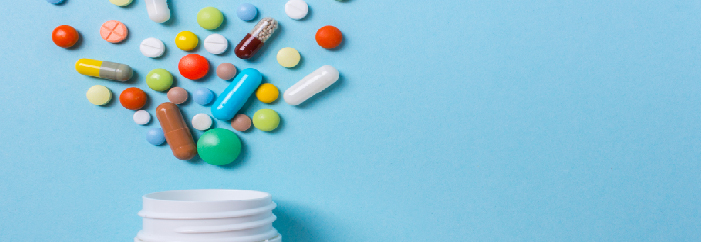The summer of 2019 was not a good one for the pharmaceutical industry, with August 26th marking one of the darkest days in the sector’s history.
A court ruling in Oklahoma found that Johnson & Johnson, one of the biggest brands in pharma, was guilty of marketing its drugs containing opioids as being non-addictive.
This was despite the US Food & Drug Administration telling the company to stop doing so and is just one of around 2,000 opioid-based legal claims made against Johnson & Johnson in the US.
Pending cases have been brought by government agencies and private individuals alike, and the Oklahoma verdict could have huge implications in terms of yet more legal claims being brought in the months ahead.
This ripple effect might not only impact Johnson & Johnson, but some expect it to spread throughout the sector to affect other drugmakers as well.
For investors, this raises risk and uncertainty akin to the mis-selling scandals seen in financial services in the past decade or so, and could make pharma the industry to watch as we move into the 2020s.
What are the implications?
The Oklahoma case was literally a matter of life and death, with Judge Thad Balkman citing an increase in addiction rates and deaths due to opioid overdose that paralleled the rise in opioid sales in the state.
He added that this followed a misleading advertising campaign by Johnson & Johnson that persuaded consumers to consider opioids as a safe and suitable way to treat chronic pain and, crucially, that they were not addictive.
But the verdict fell well short of the $17 billion compensation prosecutors were seeking. In fact, Judge Balkman awarded less than $600 million, which is to be used to support affected opioid addicts in seeking treatment.
To put the number in context, it’s around three-quarters of one percent of Johnson & Johnson’s total revenues for the year to the end of June 2019 – more than $80 billion.
Even in terms of net income, the company reported $16.3 billion for those 12 months, making the fine about 3.5% of that figure.
So this individual fine is of relatively little concern compared with the future threat of thousands more opioid-related claims being brought against the company and the wider pharma sector.
It’s also worth remembering that this case applies only to Oklahoma; there are 49 more US states, each of which could seek a settlement from Johnson & Johnson of a similar size or larger than the amount awarded in this instance.
Assuming future fines could be anywhere between the $570 million awarded here and the $17 billion prosecutors asked for, that’s a wide range of uncertainty for pharma investors to predict.
Bigger fish
While Johnson & Johnson is a household name in pharma, it’s not in the top ten producers of opioids in the US.
Top of that list is SpecGx, which produced nearly 29 billion opioid pills in 2006-12 according to Drug Enforcement Administration data, and Actavis Pharma which manufactured nearly 26.5 billion in the same period.
Together, the two brands produced nearly three-quarters of opioid pills manufactured in the US during that time, and each holds a market share of just over a third.
For investors in those organisations and others in the top ten, the Johnson & Johnson ruling is a legitimate cause for concern – and some of the top-ranking brands, such as Purdue Pharma, have already been driven into bankruptcy by opioid-related settlements totalling into the tens of billions of dollars.
With fines and settlements likely to reflect the companies’ market share, it’s a directly scalable problem, so size is no insurance policy against the total value of claims that could be made: nobody is immune.
Where to find safety in pharma
The solution to finding safety in the pharma sector right now is relatively simple – avoid opioids.
That not only includes the major manufacturers, but also the pharma firms and retailers in the sector who distributed substantial quantities of opioids in recent years, even if they did not produce the pills themselves.
Merck is one option, as the company has vocally set itself apart from the opioids market and remains a widely recognisable pharma brand.
Another alternative is to get out of the human medicines market completely. Animal pharma has been a booming sector in recent years with brands like Zoetis posting stock value growth of over 50% in 2019.
For investors who are concerned about the medium-term implications of the Johnson & Johnson Oklahoma case, this could offer a lucrative alternative until the human pharma industry finds its feet again.
https://www.fool.com/investing/2019/09/05/how-will-johnson-johnsons-opioid-case-ruling-impac.aspx
Disclaimer: The information provided here is not investment, tax or financial advice. You should consult with a licensed professional for advice concerning your specific situation.




